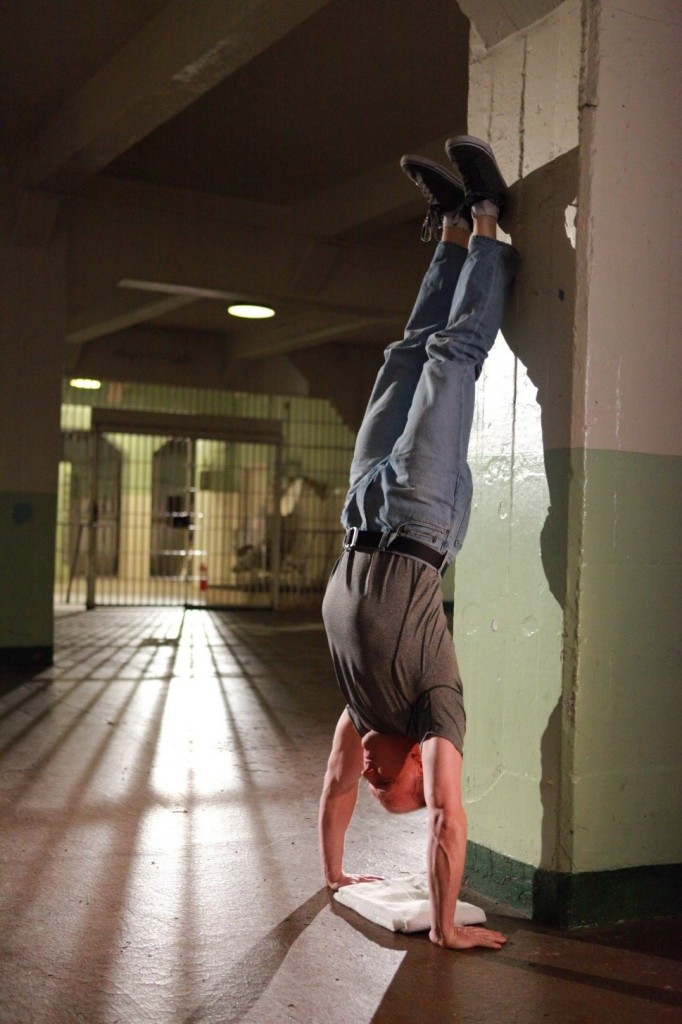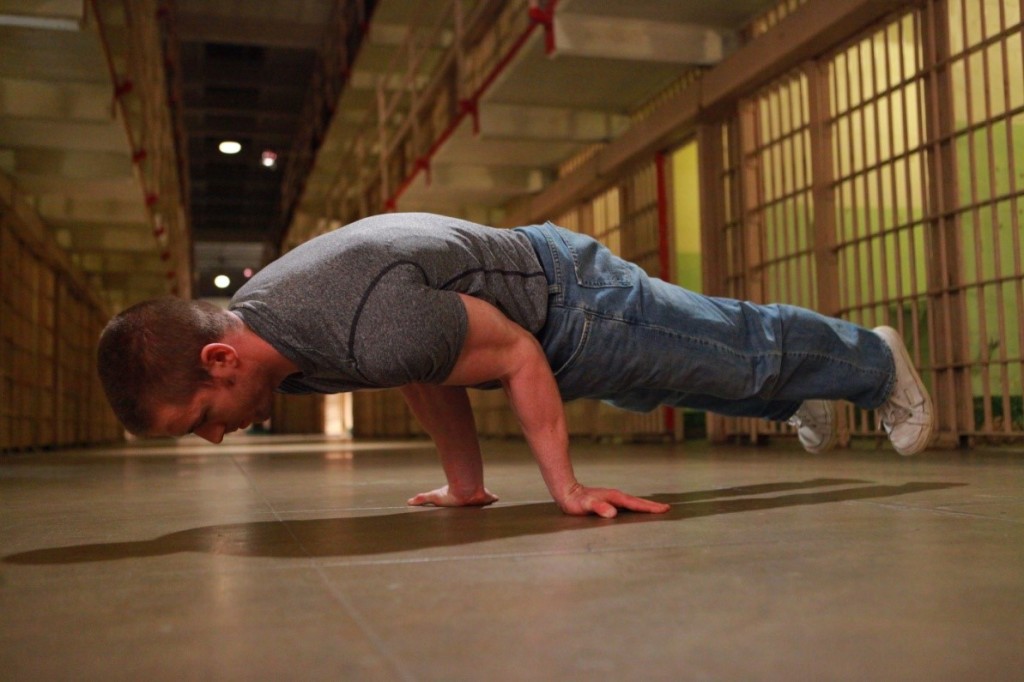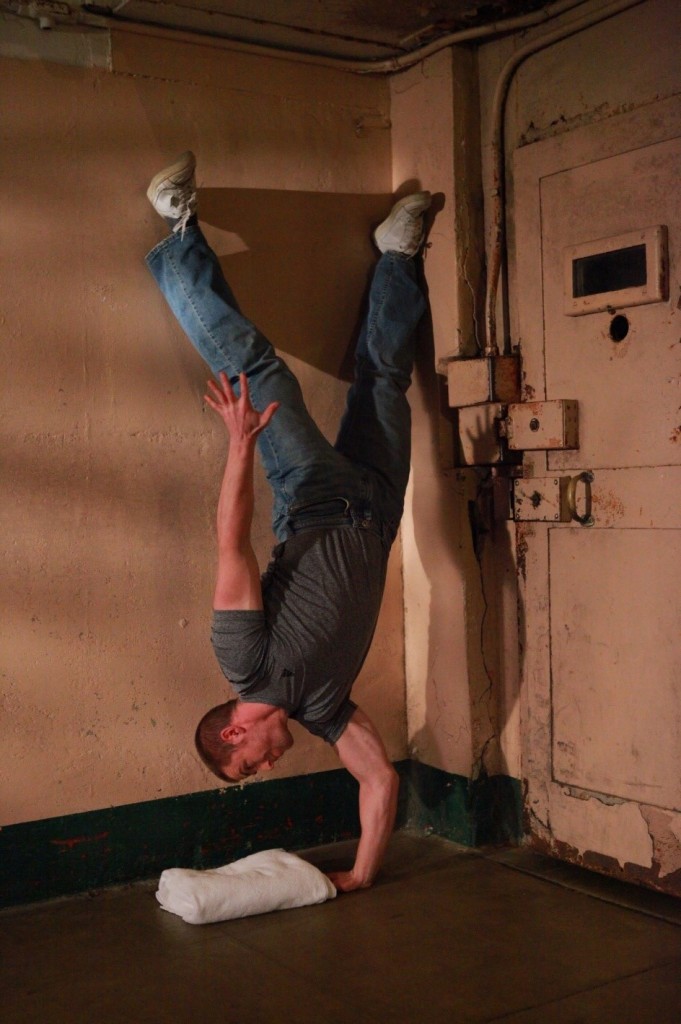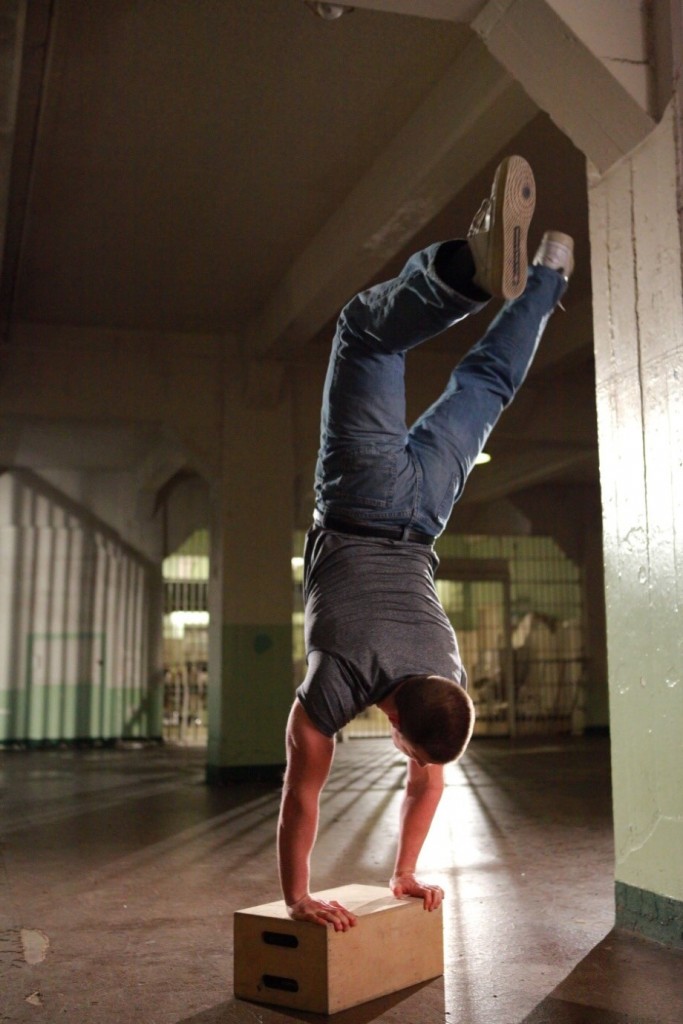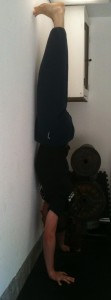If there’s one thing we can all agree on in the world of strength and conditioning, it’s this: The National Handstand Council (NHC) has done a freaking terrible job of promoting the benefits of the handstand.
Why have they failed? Well, partly because I just made them up. But that’s no goddam excuse is it? Superman is made up, and you don’t see Lex Luthor all up in your face, right? So he did his job. But the NHC? Jesus. Useless. Guys want to work their pressing muscles, and they hit that bench press. Or reach for the dumbbells and do some shoulder presses. Some of the hardcore dudes might work some barbell standing presses. But handstand training? Good luck finding that in a gym, right?
You suck, NHC!!
But luckily the strength world does have a champion for handstand training; a man who has tirelessly promoted the strength and conditioning benefits of the old upside-down work so effectively that he has pretty much become the face of handstands on this here internet. This hero’s name is Logan Christopher. When Dragon Door formed the Progressive Calisthenics Certification (PCC) to instruct athletes in all aspects of bodyweight training, I pretty much begged Logan to get on-board: he’s so much more than “the handstand guy”, but hell, nobody knows handstand training like Logan. History, methods, kinesiology, you name it.
The bottom line: you gotta have those handstands!
I have probably been doing some kind of handstand training since before most of you reading this were born. Bill Pearl used to say that no one approach to training would take care of you for your entire life, and this has certainly been true for me and handstands. In fact, my approach to handstands has gone through at least four different stages.
The Brutal Basics: Wall Handstand Holds
When I first started calisthenics, I basically did two pushing exercises: basic pushups and handstands against a wall. This was in my early twenties, and in jail: no weights, no machines, no benches—nothin’. It seems primitive by today’s standards, but looking back, god damn—what a wonderful way to start off! I’d do pushups to work my chest, triceps and front shoulders, then at the end of the workout I’d flip up against the wall and just try and stay locked out for as long as I could. I knew I was doing great work for my muscles as I felt the burn viciously intensify in my delts, traps and arms. Oh man, wonderful stuff!
I still look back on that early training and thank God I didn’t have access to a modern gym the way today’s guys do. Most wannabe strongmen nowadays sit on their asses on padded benches to press—or worse, they lie down! When you think about the artificial nature of this, you’ll realize how nuts it is. How often in the real world do you ever need to summon huge strength while you are sitting down? Or lying down? Hell, real strength is ground-based. Training while you are carrying your entire weight through the floor forces the entire body to work as a unit to become stronger. Think about it…if this principle is true when your feet are carrying your weight, how much truer is it when your hands are carrying your weight during training?
The answer: much truer. If you want to begin to really tap your strength potential, get on your hands, son.
In My Prime: One-Arm Work
I trained this way a few years. I eventually got to the point where I could easily hold wall handstands for over a minute, so I switched to one-arm wall handstands. Oh, fun fun fun, boys and girls! One-arm work does stuff for your body you would never imagine. Your joints have to lock harder to support you, training the hell out of those elbow tendons; plus, my hands became hugely stronger. Just supporting your weight entirely on one hand throws enormous stresses through the soft tissues, and even the bones of your mitts. It made my hands tough as hell—and not just my grip, but my wrist strength and finger extensions too. All with no grippers or external weights. In fact, I wasn’t even trying to train my hands!
Over time, I moved away from the wall and embraced old-school hand-balancing. Again, I used very few exercises. I worked with elbow levers, one arm elbow-levers, free handstands, and one-arm free handstands. I didn’t build much more muscle this way; but boy, did I get stronger! Plus, I was learning to use the muscle I had built already. Over time I fused these core techniques into one “super-technique”—the pushup into a one-arm handstand from a one-arm elbow lever. In reality, there’s not a huge amount of “pushing” in this move. Do it right, and you kick up with your legs, building a head of momentum that carries you up. But it is an amazing movement, and I still feel privileged that I ever learned it at all.
I think it was during this period that I began to understand the true benefits of handstand training. It’s functional—it really teaches you how to use your body as it was meant to be used. I’ve heard a lot of writers diss on bodyweight, especially the idea that it’s a natural way to train. What the hell is natural about a handstand? They say. Well, I disagree with this attitude. Learning to hold the body up on the hands is natural—in fact, it’s practically hardwired. We just choose to ignore it. We are one of very few species that has chosen to walk exclusively on our hind legs—all other species (and our ancestors) naturally also used the forelimbs—the hands. When we are babies we begin to explore the world by crawling, by walking with our feet and hands. We get up from the floor by pushing through our hands. When we run at high velocity and tumble over, we inevitably spin into a handstand, if only for a split-second. Handstand training is just a scientific extension of these very natural (but mislaid) movement patterns.
HSPUs Convict Conditioning-Style!
When I started coaching guys a few years later, none of them were interested in the arcane arts of hand-balancing. Elbow levers? Shit, why?! They just wanted to get as diesel as they could, as quick and easy as they could. Swole shoulders, boy! So I trained them with handstand pushup progressions up against a wall. Rest assured, I strenuously experimented and “pressure tested” these techniques in my own little “lab”: and just about doubled the size of my deltoids by doing so.
Man, if you’ve never worked your handstands like this, it’s a brutal and super-efficient way to build huge levels of muscle and tendon-strength. You begin with inverse positions to train your body to being happy upside-down, set against the wall. When this gets easy, the handstand pushups begin. Since you’ve pretty much taken the balance element away, all the resources of your body and brain can be devoted to pushing.
The effects are not unlike heavy barbell presses, but with one exception: they strengthen and build up the vulnerable shoulder and arm joints, instead of tearing them down. Howcome? For one, the hands are flat—instead of gripping as they push. The old-timers who trained me were convinced that gripping while you push (as in barbell presses, bench presses) causes all the elbow and forearm problems so prevalent in gyms today. The flat hand cures these. (In nature, guys pushing heavy objects always do it with a flat hand. So why do we clench our hands while pushing in the gym?) Also, your elbow and body positioning is much more authentic during handstand work—in the gym, guys are forever pushing their elbows out, putting the bar behind their neck, and so on—this is all unnatural and wrecks those shoulders. Another major point is that your range-of-motion is limited by nature during handstand pushups—yer head gets in the way. This change alone cures a huge amount of shoulder problems.
These progressions went on to become a mainstay of my book Convict Conditioning. I stand by this type of work for bodyweight bodybuilders, and guys who want to build muscle, strength and joint health without the balance element of traditional, free hand-balancing.
OBHB: “Old Bastard Hand-Balancing”
As it stands, my next “big” birthday is a few short years away, and it has a 6 in it…unfortunately, the 6 ain’t on the good side! In the last five or six years, my inverse training has taken another definite turn. I still love being upside-down, but these days I do things different. Gone are the super-heavy handstand pushups against the wall—in their place, I’m back to traditional styles of hand-balancing. I play with stuff like:
- Perfectly straight, still, free handstands
- Timed free handstands (with a body-curve allowed)
- Asymmetrical free handstands (different arm and leg positions)
- Handstand transitions: bridge to handstand, forward bend to handstand, etc.
- Walking on the hands
- Sideways walks on the hands (try it!)
- Headstands and shoulderstands
This keeps my interest up, maintains muscle and strength, and keeps my shoulder girdle healthy. And more than that—it’s fun for me. After years of grinding out HSPUs, learning to use balance and equilibrium again is interesting. Discovering the similarities between grace and strength is enjoyable—creative, almost. Will I ever go back to heavy asymmetrical unilateral handstand pushups? Probably. Almost definitely, someday. But like old Bill Pearl said, you need to shake your training up if you want to stay interested and in this game for the long haul.
In many ways, this kind of training makes me feel like I’m going back to my roots. My first real calisthenics mentor, Joe Hartigan, was a huge fan of handstands, or “inverse work” as he sometimes called it. For Joe, the most important element of this type of exercise wasn’t muscle or strength gain at all—it was the fact that you were upside-down, or “inverse”. He was convinced that spending time wrongside-up had amazing health benefits, like flushing the lymph system, toning the circulation, and filling the brain with large volumes of fresh blood (he felt that this “fed” the pineal and pituitary glands, the “master glands” of the endocrines, thus optimizing hormonal output). In fact, Joe lumped headstands and shoulderstands into the same group of exercises as handstands. He often performed simple headstands for prolonged periods. I sometimes thought he was crazy—and I wasn’t the only one—but his results weren’t crazy. The guy was a strength legend, pretty much up to the day he died.
Handstands and hormones? Maybe kid. Maybe.
***
So perhaps you can see just from my own brief training bio that there are many ways to skin that cat…many ways to work on those hands God blessed you with. Which is the “best” approach? Basic handstands, gymnastic elbow-lever tricks, HSPUs against a wall, or old-school hand-balancing…?
Hm. Let me answer this way. For many years I was kind of obsessed with finding the ultimate method of calisthenics. But since working more closely with Al Kavadlo—the greatest calisthenics coach in the world—I’ve realized that there is no ultimate way. If you are enjoying your training, and getting better without screwing up your joints, hell, you are winning the game. That’s what it’s all about kid.
Now go get on your hands.
Paul “Coach” Wade is the author of the best selling books, Convict Conditioning and Convict Conditioning 2. These books are a must have for anyone interested in bodyweight training.

